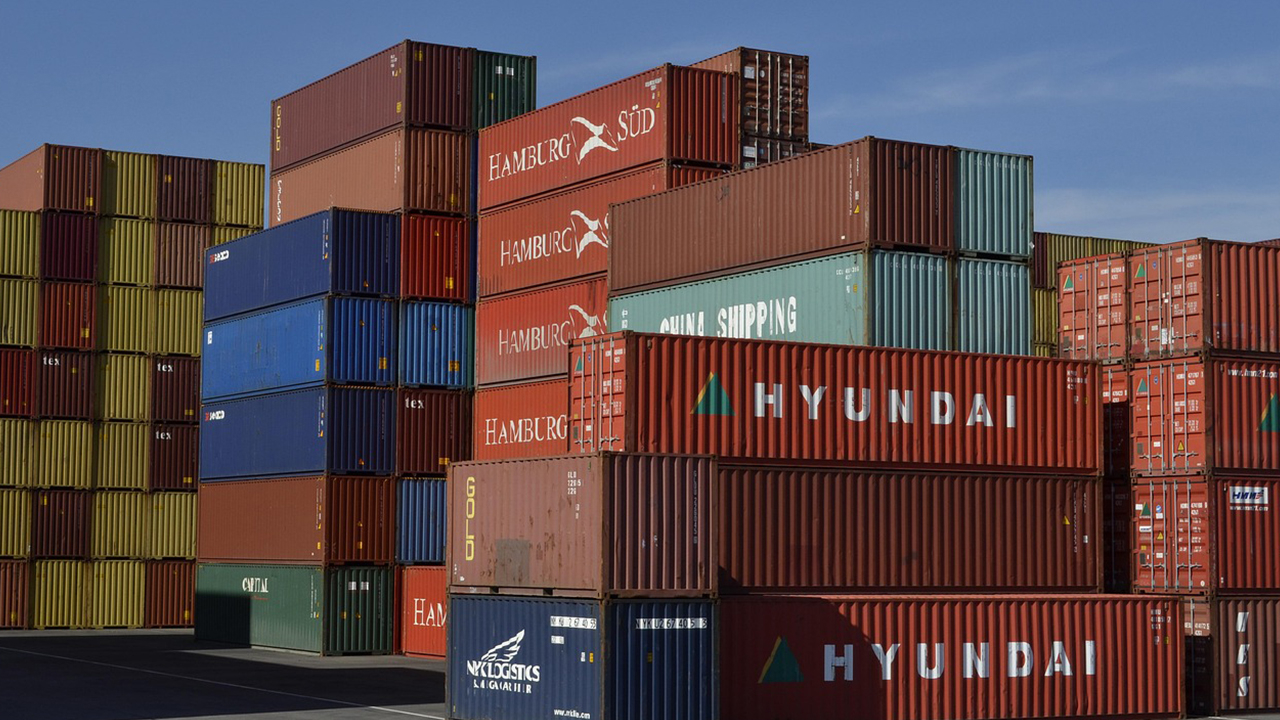Fluctuating tariff policies create uncertainty for labeling industry
The Trump administration’s ‘Liberation Day’ tariffs have been delayed and are now scheduled to resume Aug 1.

Image by druckfuchs from Pixabay
Update: On Sunday, July 6, the Trump administration announced that 'Liberation Day' tariffs will be delayed until Aug 1.
The next day, on July 7, President Donald Trump began sharing letters announcing the tariff rates for different countries.
Numerous industries are in limbo as they await the July 9 resumption of the ‘Liberation Day’ tariffs — the ‘reciprocal’ US duties on goods from nearly every country in the world that were in place for a week in April.
But with the Trump administration working on negotiating trade deals, and the legality of those tariffs still being reviewed by the US court system, there is a chance they may not actually be reimposed.
Meanwhile, a 10 percent tariff on imported goods from most countries remains in effect. Products from China are currently subject to a tariff of 55 percent. USMCA-compliant goods from Canada and Mexico are exempted from tariffs, while most noncompliant goods from those countries face a 25 percent tariff.
The US tariff situation has been in a constant state of fluctuation since the start of the second Trump administration earlier this year. Frequent changes to which countries and products are subject to tariffs, as well as the amounts of those tariffs, have created a challenging and uncertain landscape for companies to navigate.
Bryan Vickers, a partner at Pace, TLMI’s government relations consultant, thinks that the Liberation Day tariffs may be delayed again unless the Trump administration finalizes a multitude of trade agreements soon. Vickers has been supporting TLMI members by answering questions and providing information about tariffs, such as at the recent TLMI printThink virtual summit.
‘We’re looking for finalization on agreements with all of the countries,’ Vickers says. ‘We know that they’re in talks with representatives from dozens of countries. I know for certain they’re meeting with the top trade officials from the EU, from China, from India, from the UK, and from some of the larger Southeast Asian countries. Vietnam would be among them, and Malaysia and Thailand and Taiwan.
‘Things are happening behind the scenes that will absolutely adjust the tariffs with some certainty.'
Tariff landscape
The first Trump administration did implement tariffs, but those tariffs were smaller, less widespread and more product-specific than the ones implemented this year.
Those tariffs prompted TLMI in 2019 to issue its current stance on the matter.
In May of 2025, TLMI reiterated that stance to its membership: ‘It is imperative that the economic playing field is level across the globe for all manufacturers. Implementation of broad-based tariffs has added to the cost and availability of many products and raw materials throughout the tag and label industry supply chains. Tariffs should be individual, product-specific and justified with the effects to US manufacturing well understood.’
TLMI’s statement continues by expressing its opposition to ‘arbitrary and undefined tariff rate schedule increases for imported products’. The statement also conveys TLMI's support for an exemption process being made available for stakeholders, with the association highlighting what that process should entail.
Tariffs most significantly impact TLMI members in two ways, says Vickers.
Firstly, many TLMI members buy machinery and equipment from Europe. That machinery is now subject to a 10 percent tariff. Because this machinery can be very expensive, even a 10 percent tariff can be significant.
Secondly, the US imports millions of rolls and sheets of labelstock material annually, much of it from Canada, China and Mexico. In 2024, the US imported 25.5m rolls and sheets of self-adhesive paper from Canada, 5.4m from China, and 1.4m from Mexico.
In the first quarter of 2025, imports of self-adhesive paper from China decreased by about 24 percent, compared to the first quarter of 2024. Meanwhile, imports from Canada increased by approximately 10 percent and those from Mexico by about 26 percent during the same time.
In April of this year, when tariffs on goods from China were at 145 percent, imports of label materials were higher than they were in April of last year. Label material imports from Canada and Mexico were about the same as in April of last year. Vickers thinks this may have been caused by an increase in rush orders that didn’t reach the US in time to avoid tariffs. May import data, which will become available the first week of July, may reveal more.
Jennifer Dochstader, owner of LPC, a marketing and research firm in the print and packaging space, noted that the labeling industry will also be impacted by tariffs’ effects on consumer goods. Container bookings from China to the US declined by as much as 60 percent in April, according to supply chain management company Flexport, indicating that brands are ordering fewer goods. The downstream effect of those decisions will be that they need fewer labels and packaging, Dochstader says.
Shipping containers, Dochstader says, are ‘the red blood cells of the consumer economy’.
After the US and China declared a truce in May and lowered their tariffs to current rates, container bookings soared by nearly 300 percent, according to container-tracking software company Vizion.
Impact on businesses
For companies that import and export goods to and from the US, tariffs are an additional cost they must either pay themselves or pass on to their customers. Changing tariff policies makes it more difficult for companies to determine the best way to handle the tariffs.
Dochstader believes some companies are making fewer capital expenditure investments, as they wait and see what happens with tariffs.
Channeled Resources Group is an American company that sells siliconized release liners, pressure-sensitive materials and blank labels. The company produces silicone release liner in Canada, which is imported to the US. The months of fluctuating tariffs on Canadian imports were difficult for the company, says president and CEO Cindy White.
These fluctuating tariffs include a 25 percent tariff announced on February 1, then paused two days later. That tariff resumed on March 4, then received a 30-day pause two days later. In April, the Trump administration clarified that USMCA-compliant goods are exempt from tariffs. There have also been product-specific fluctuating tariffs on aluminum, steel, potash, automobiles and more that have impacted US-Canada trade.
White says that CRG’s Canadian business could not have sustained the 25 percent tariff and would have been forced to close.
‘I don’t know how many companies can take a 25 percent increase,’ she says.
CRG’s Wisconsin facility also produces silicone release liner, White notes. However, the release liner is manufactured on wider equipment than in Canada, making the Canadian product more suitable for smaller-sized companies. To move that business to the US would have been inefficient and financially detrimental.
Additionally, CRG purchases base paper for its release liner globally, much of which is now subject to a 10 percent tariff. The company has passed half of this tariff on to its customers.
The company also brokers materials from India and Thailand. CRG is not passing this tariff on to customers. White is concerned about the tariffs on this material increasing to 27 percent and 36 percent, respectively, on July 9.
‘On July 9, will we go back to that?’ White says. ‘Will it stay at 10 percent? There’s just so much uncertainty. It’s very, very, very hard to plan.’
John McDowell, president of converter McDowell Label, a Resource Label Group company, states that McDowell and Resource Label Group are closely monitoring the tariff situation and acting preemptively to mitigate its impact.
For instance, Resource Label Group, which has facilities across the US and Canada, moved its business for one of its customers, a large national brand, from Canada to the US.
‘We've been actively and intrinsically engaged with brand owners and supply chains to make certain that we are still a customer-first, customer-forward company,’ McDowell says.
McDowell notes that the labeling industry’s supply chains are global, with materials, inks, resins and more coming from all over the world. Resource Label Group is a large and growing company, which gives them leverage in negotiating tariff responsibility with supply chain partners. As a result, McDowell says that the company has been able to mitigate or eliminate the cost of tariffs coming through the supply chain.
McDowell says that, in a perfect world, there would be fair and open trade. He believes that tariffs are a ‘long overdue conversation’ and a short-term tool to achieve the longer-term goal of fairer and more open trade.
‘There's a lot of negotiation, a lot of excitement, a lot of anticipation, probably fair to say some level of anxiety,’ McDowell says. ‘But since day one, I personally looked at this as a long play.’
Staying ahead in challenging times
Relationships are key to overcoming these types of economic obstacles.
McDowell says that the company’s relationships with customers and supply chain partners will help it steer through any potential challenges caused by tariffs.
‘We’re customer-driven,’ he says. ‘That is the impetus of who we are and what we are, the old proverbial saying “KYC” — “know your customer”. It’s important for our supply chain to parrot the same esprit de corps and ethos of business operations that we employ because all customers ultimately have a choice.’
Dochstader also notes the importance of relationship-building: ‘Converters are going to have to really figure out ways to make sure that their customer base understands their value as a supplier. In turn, suppliers to the industry have to figure out ways to ensure and reinforce to their converter customers that they can help them create and build value as a customer.’
Stay up to date
Subscribe to the free Label News newsletter and receive the latest content every week. We'll never share your email address.


